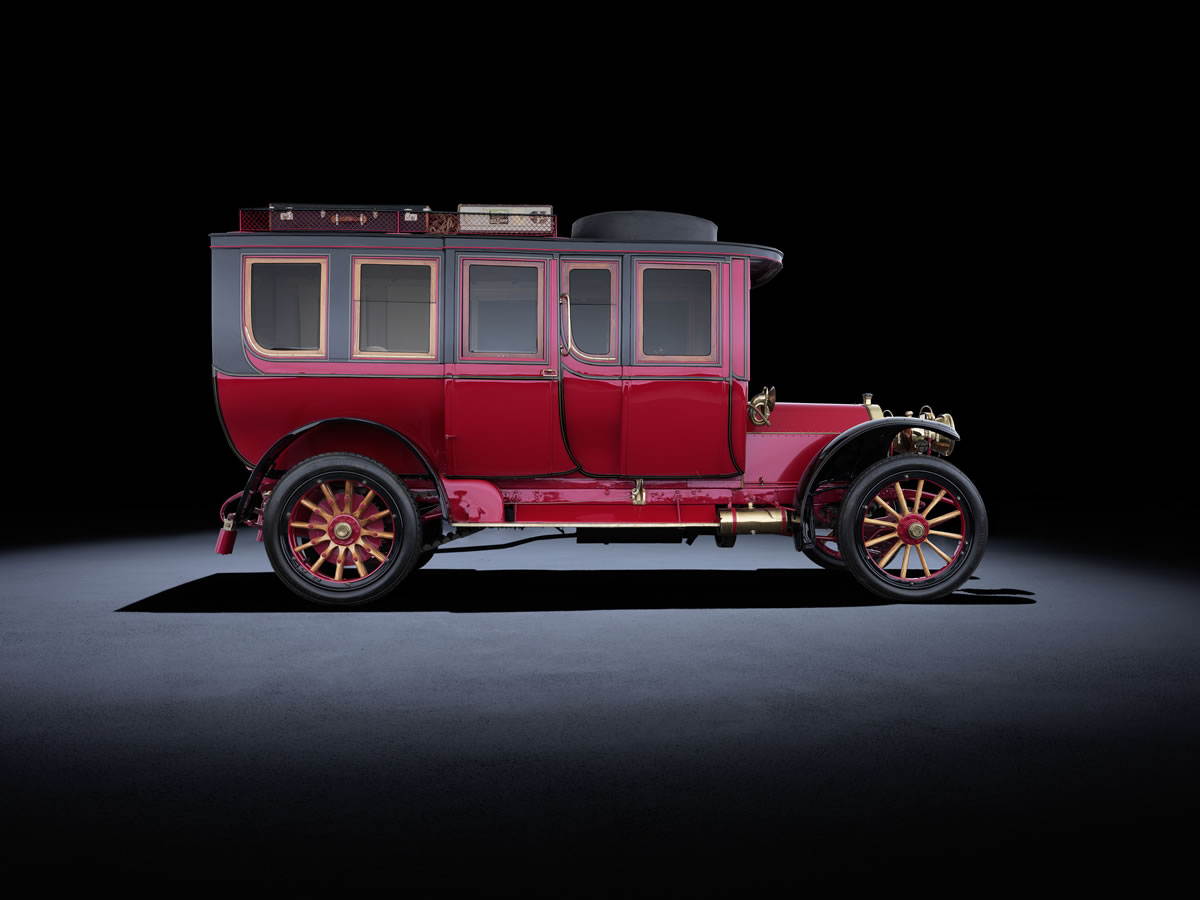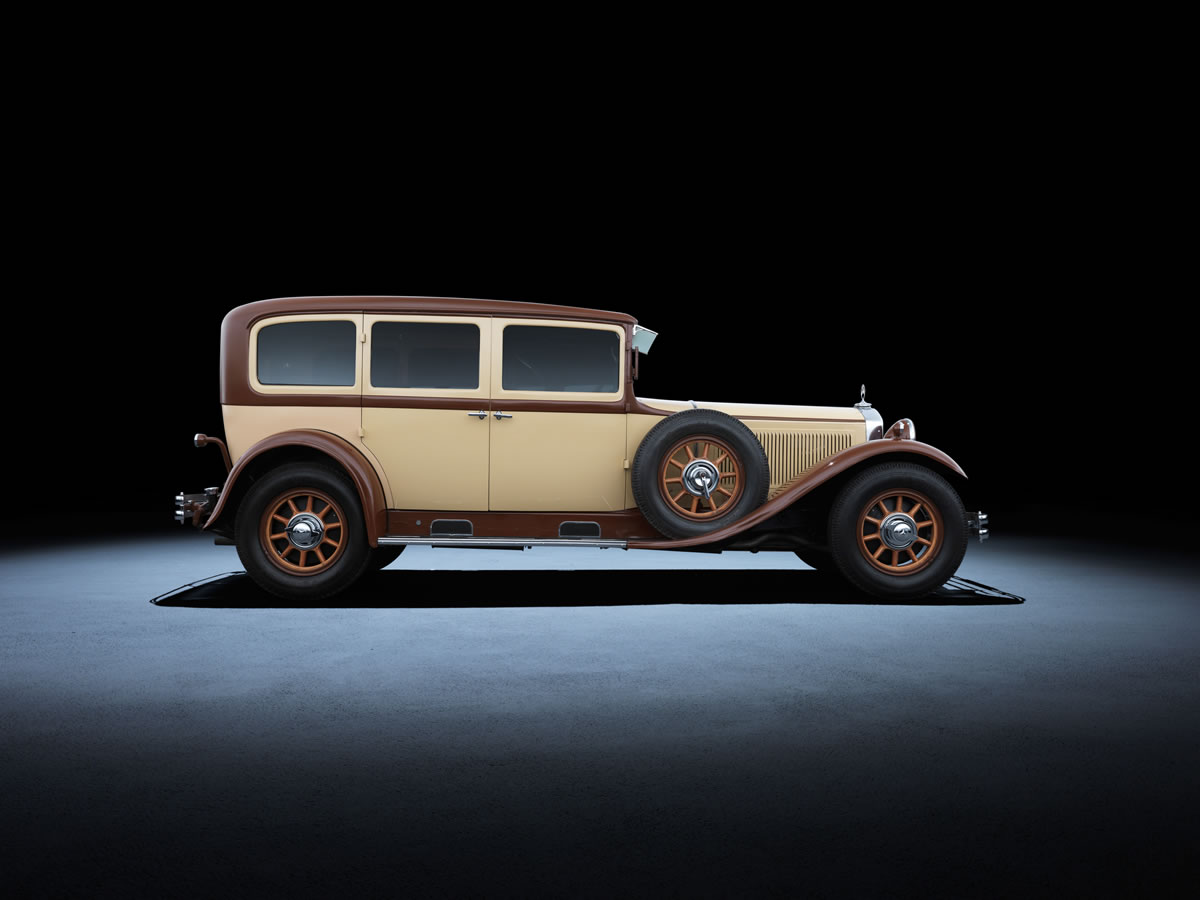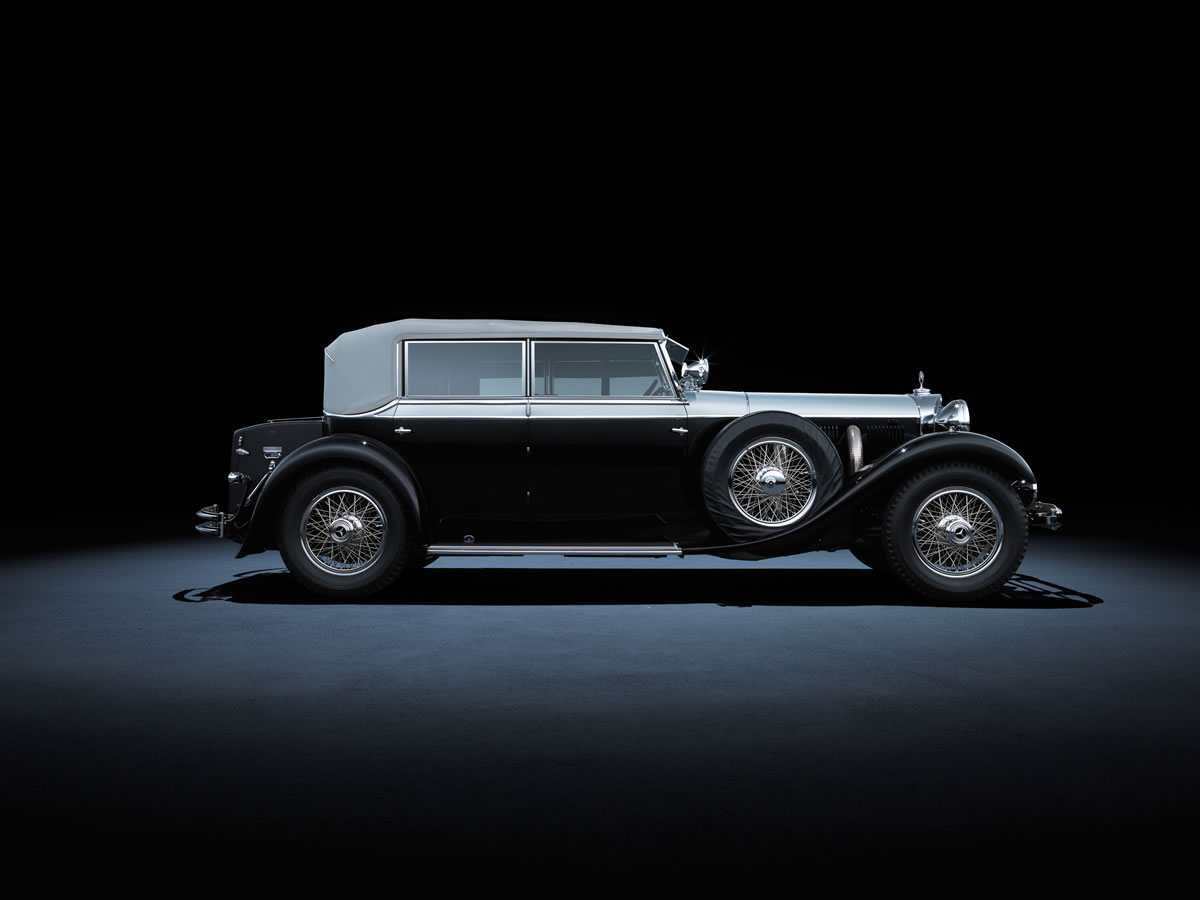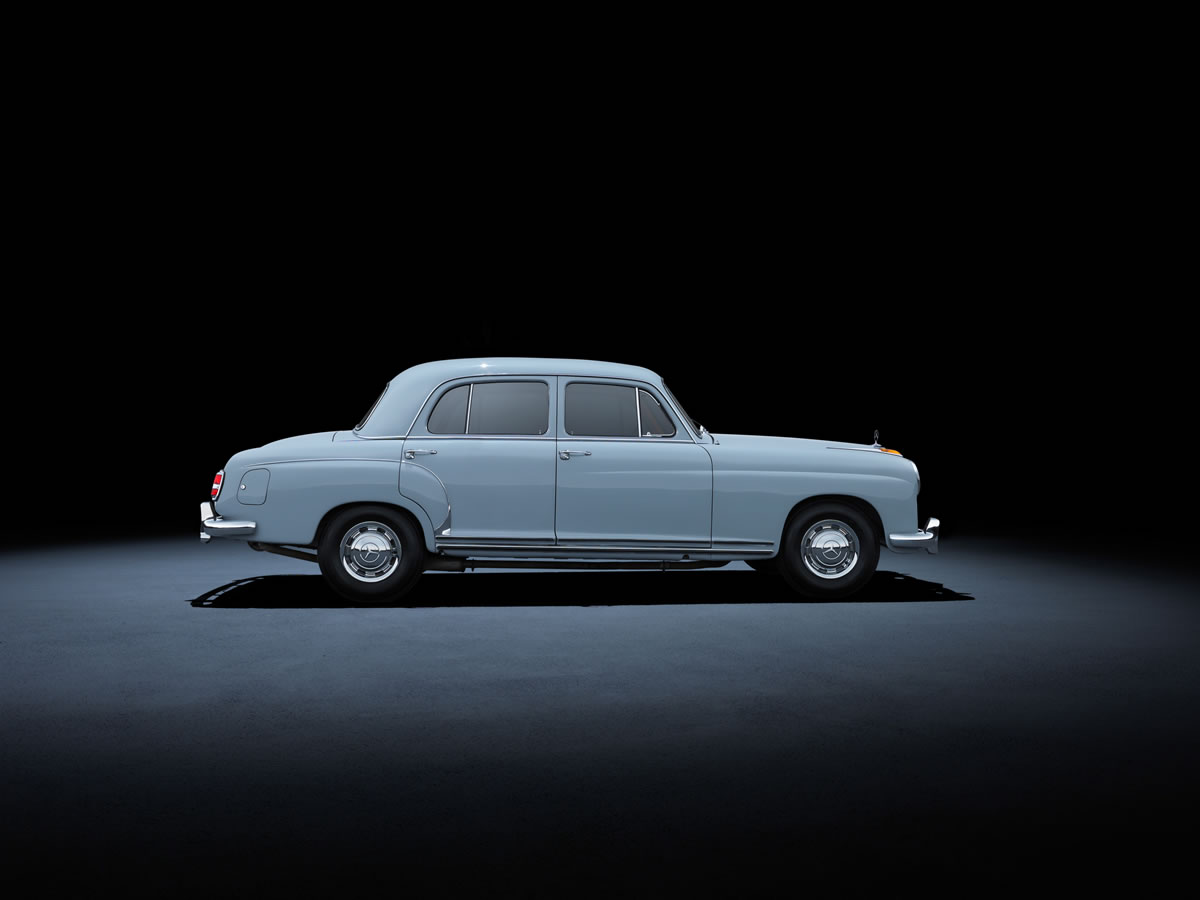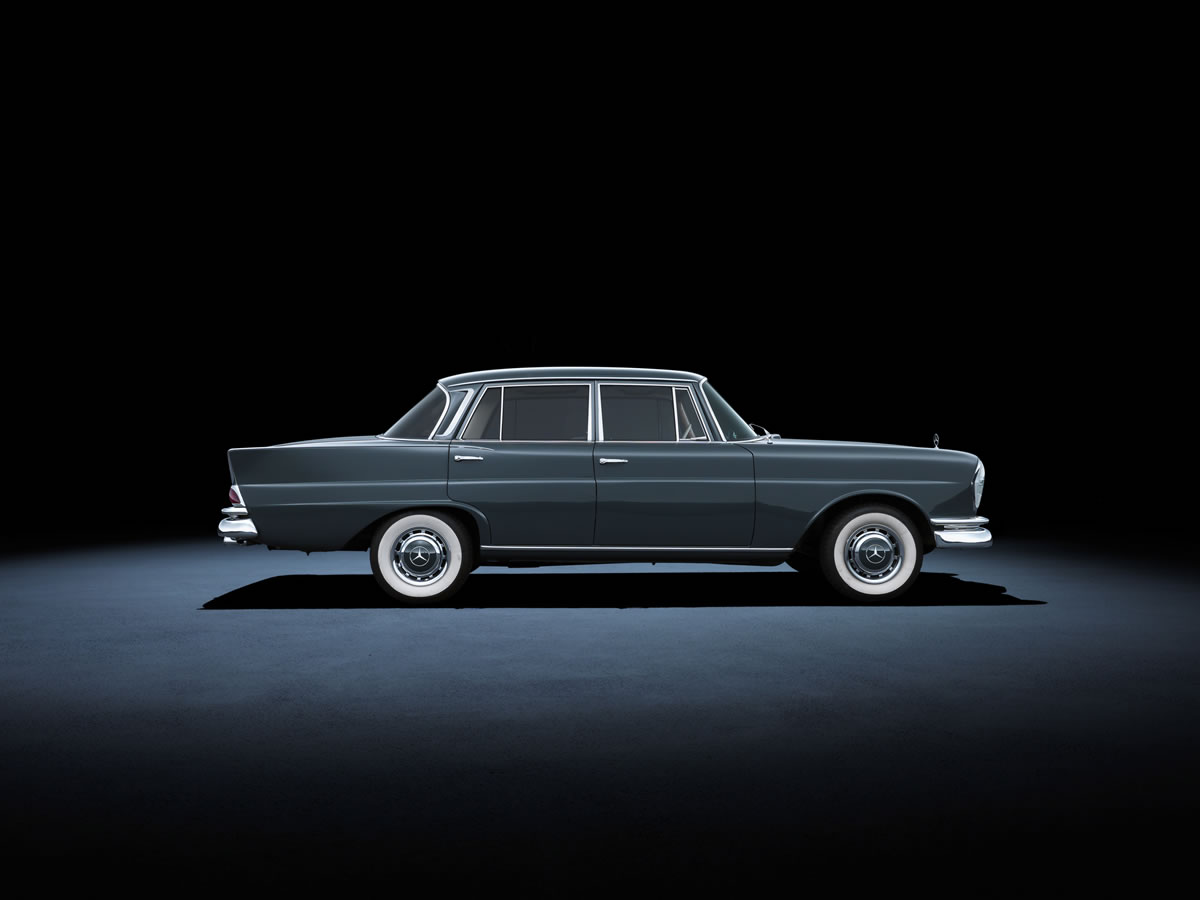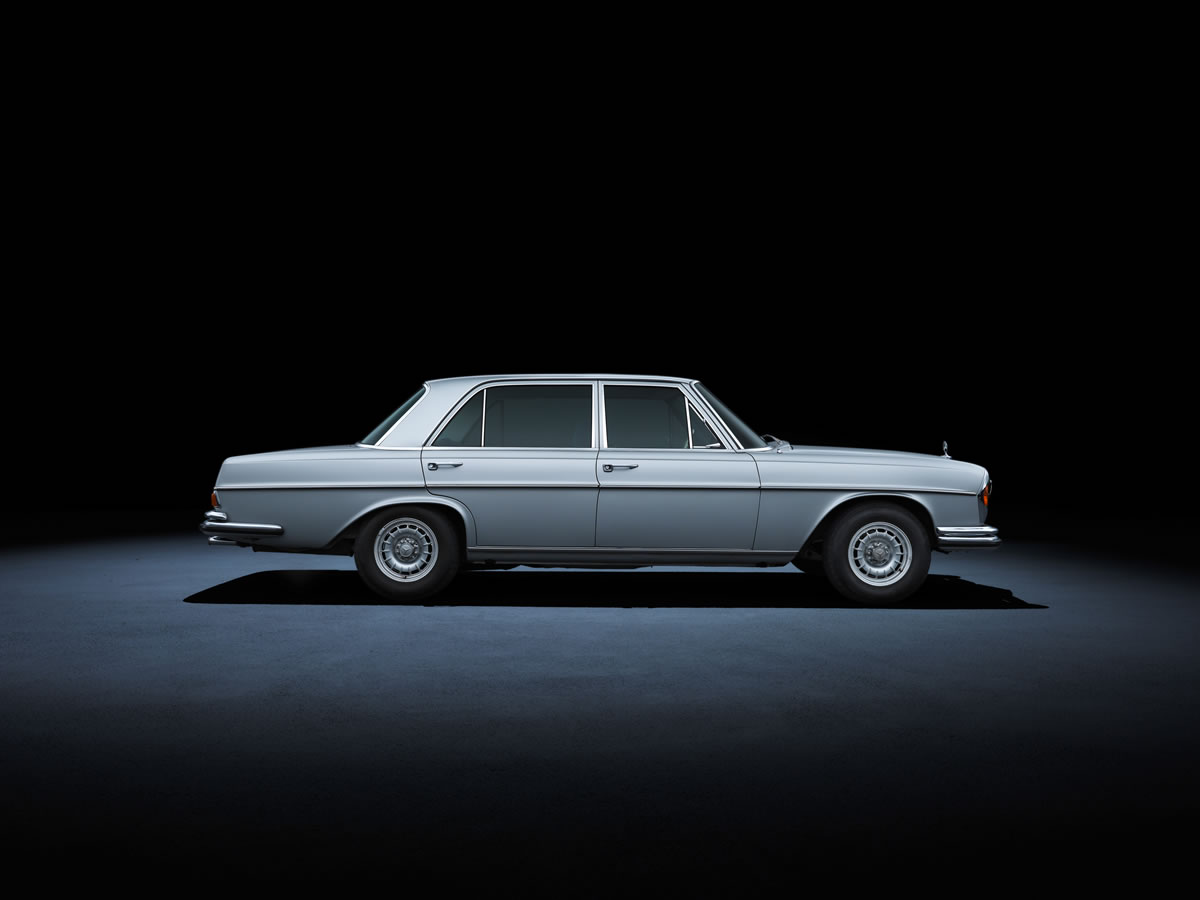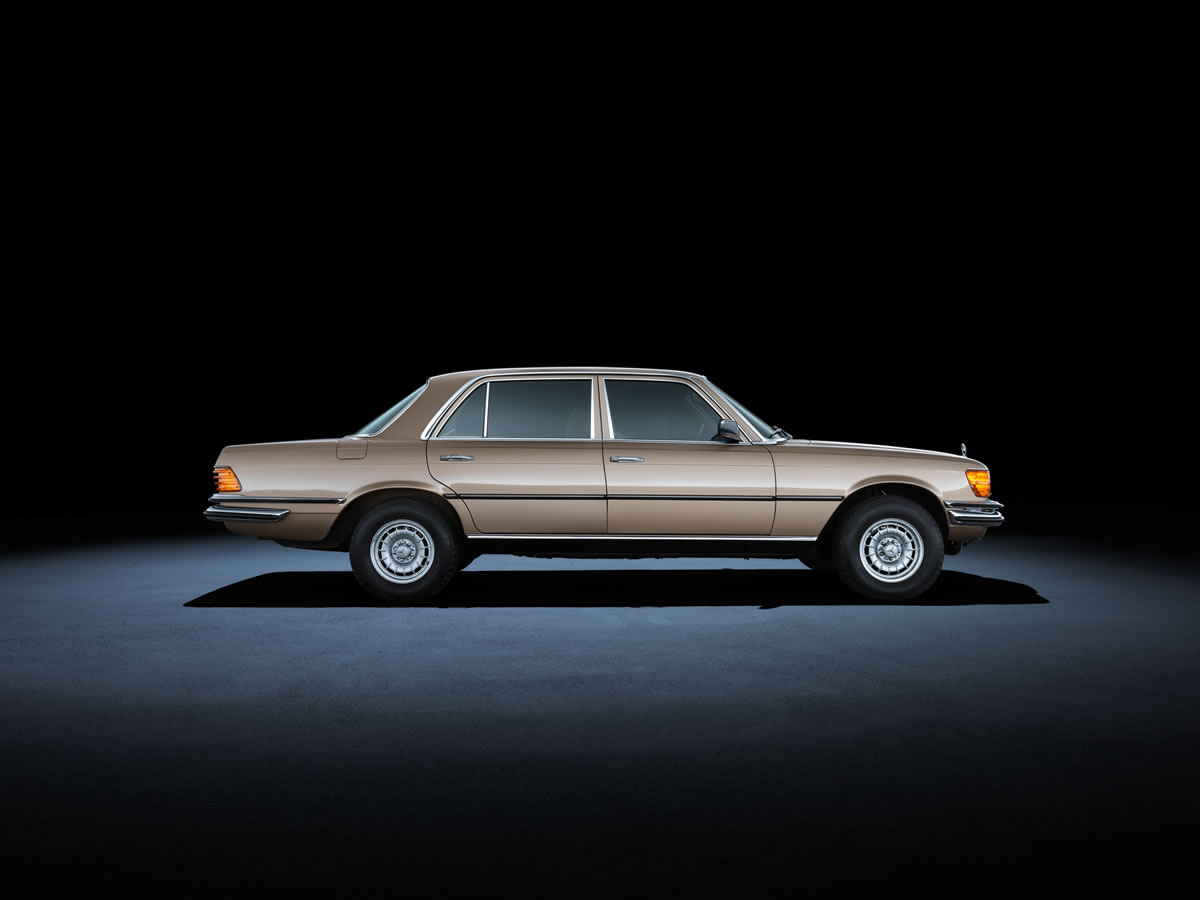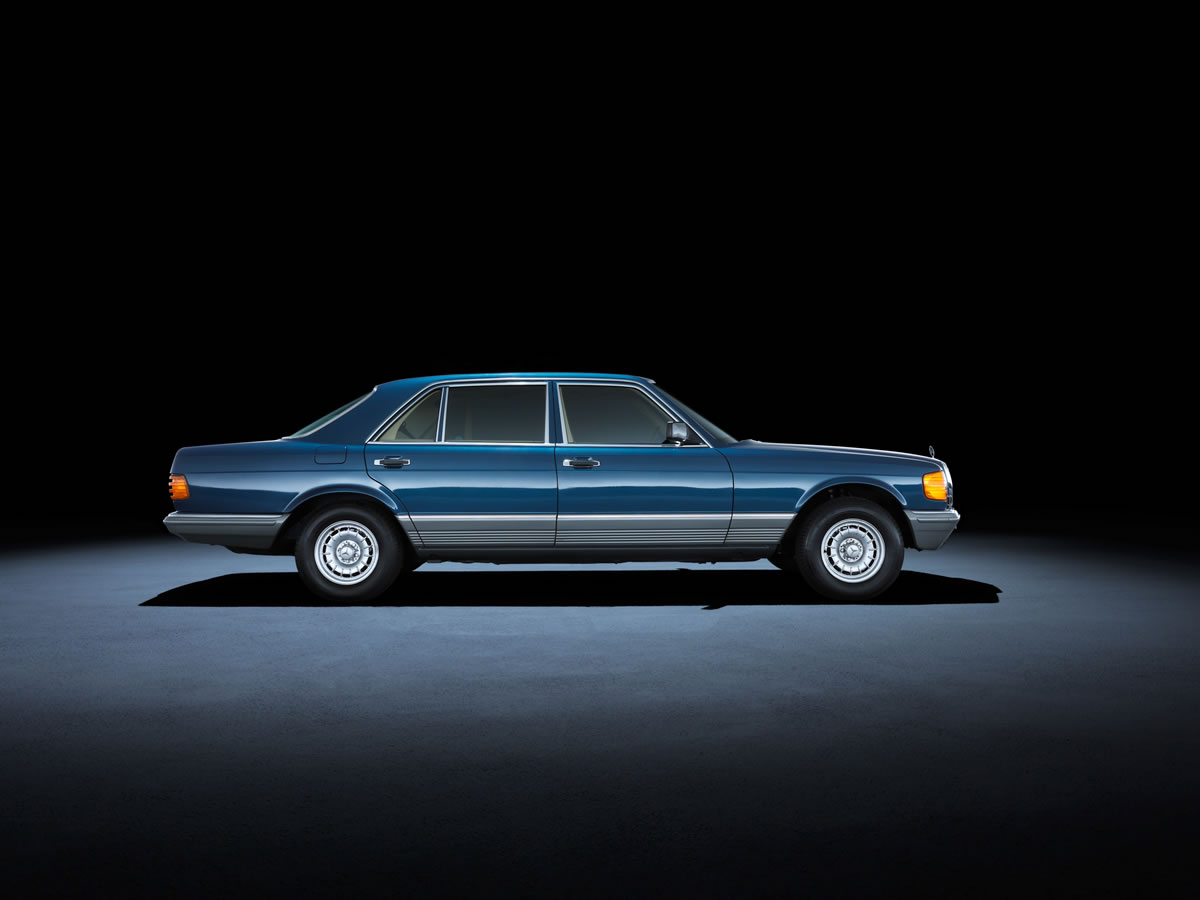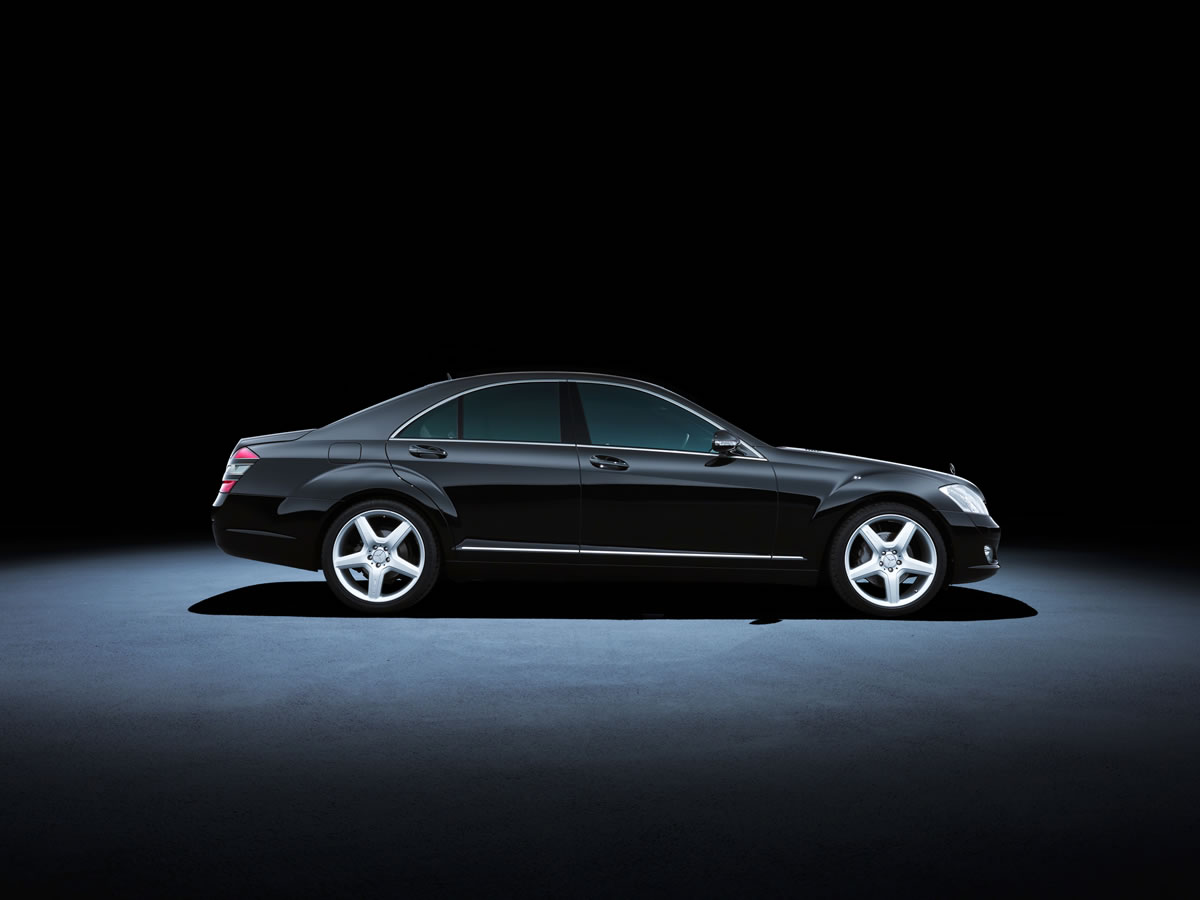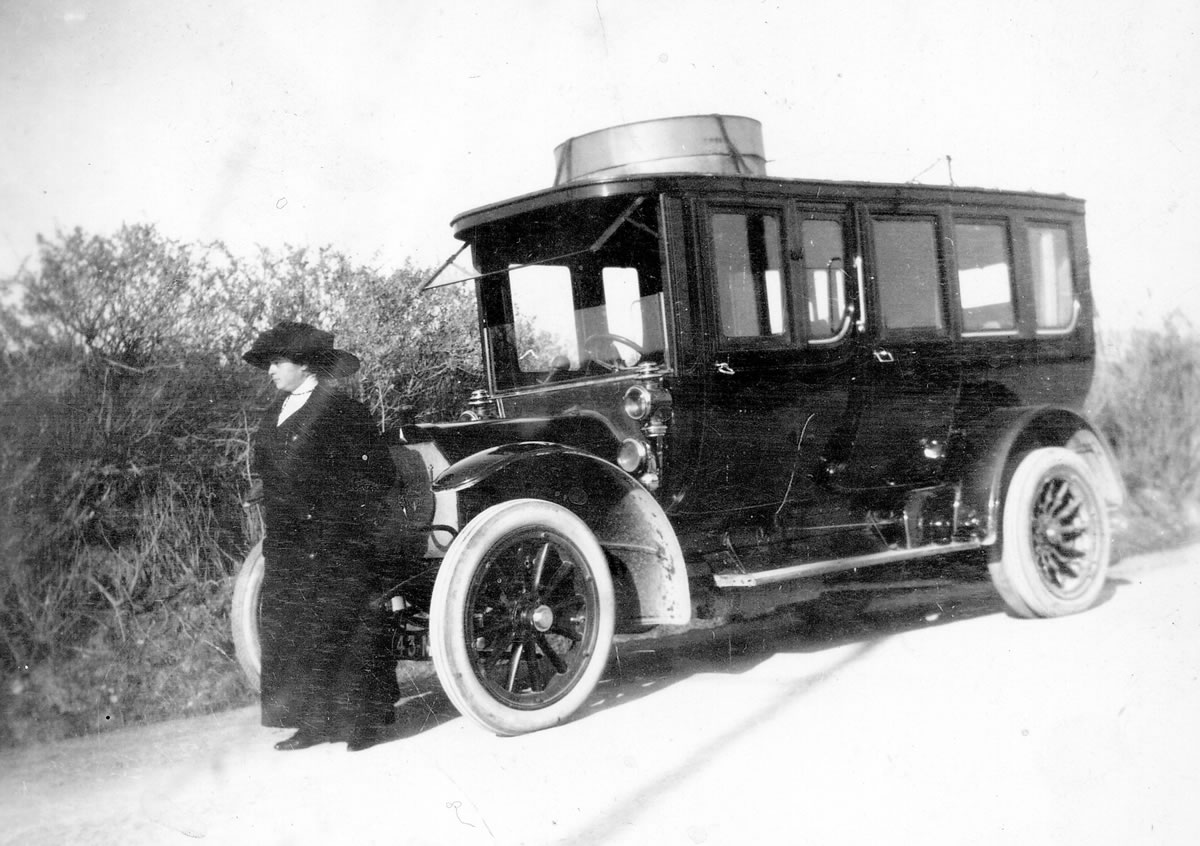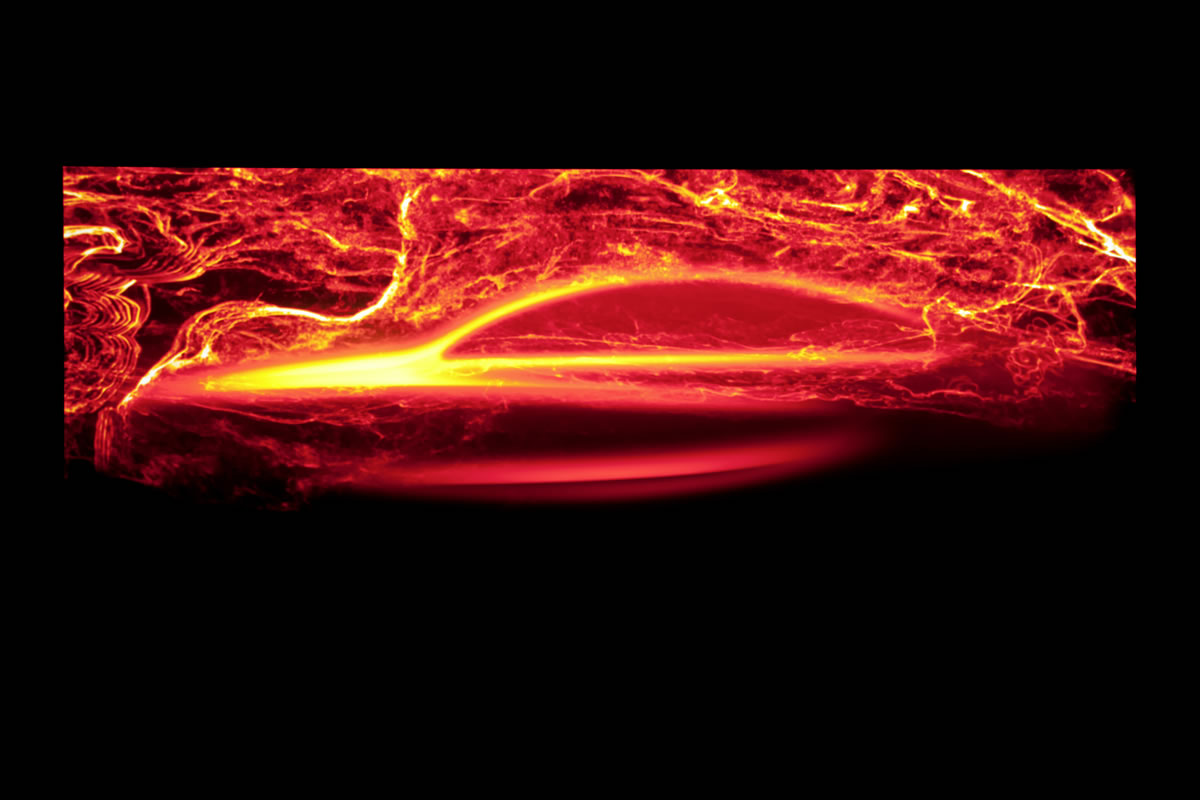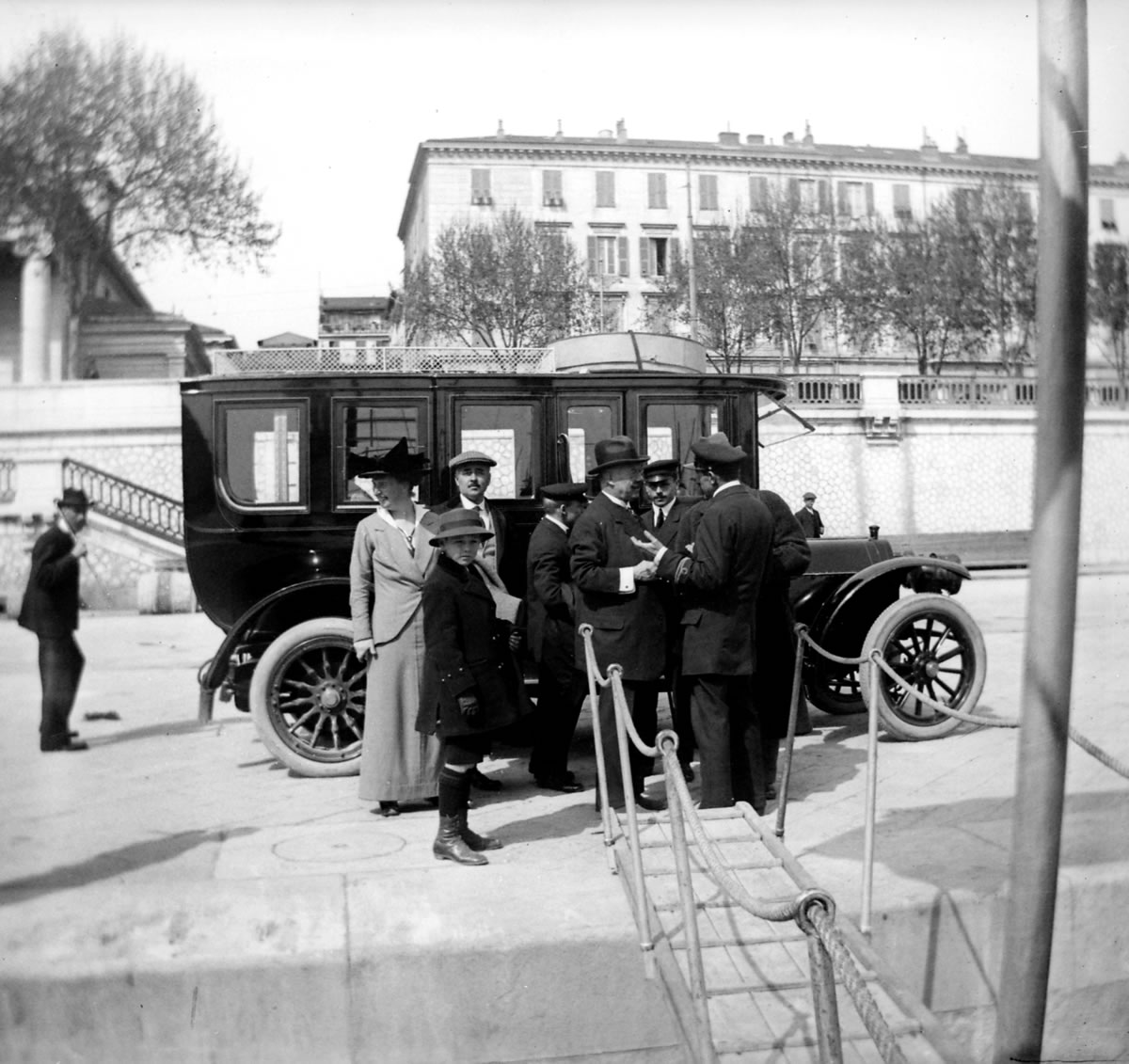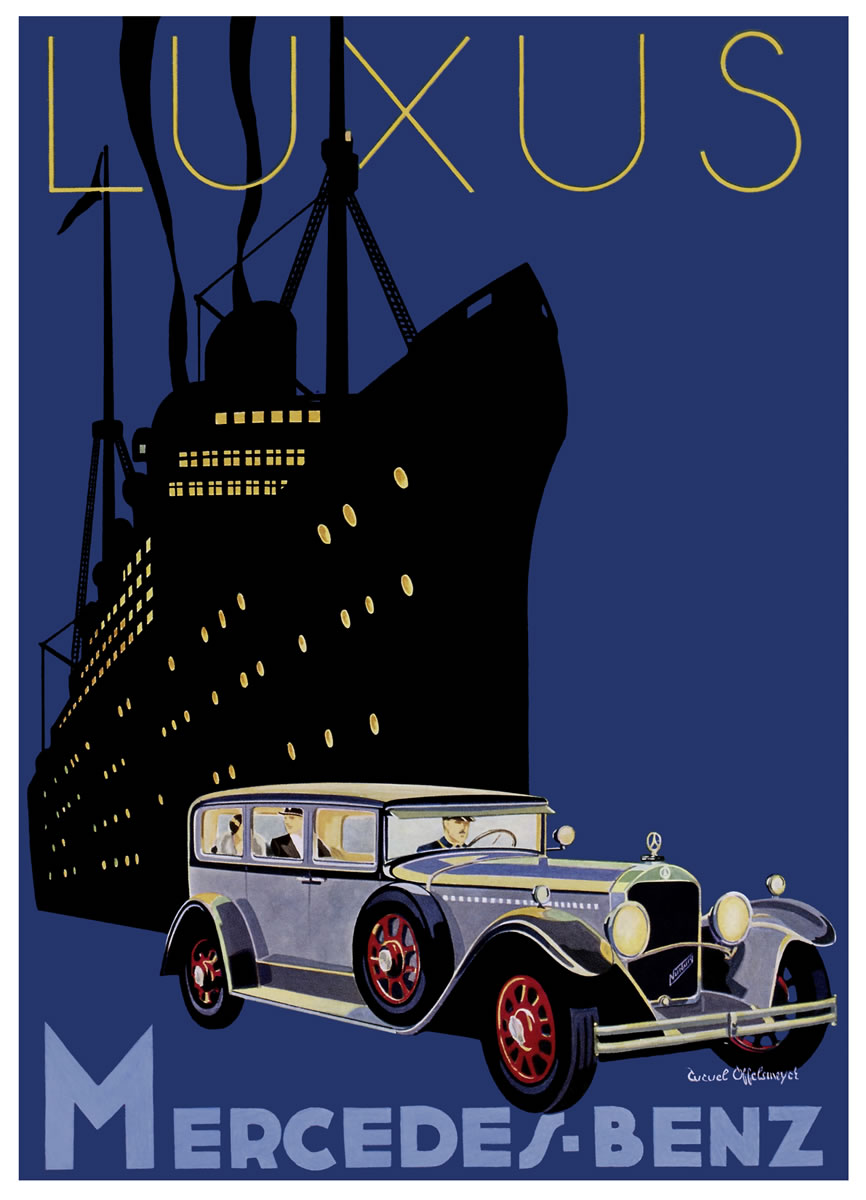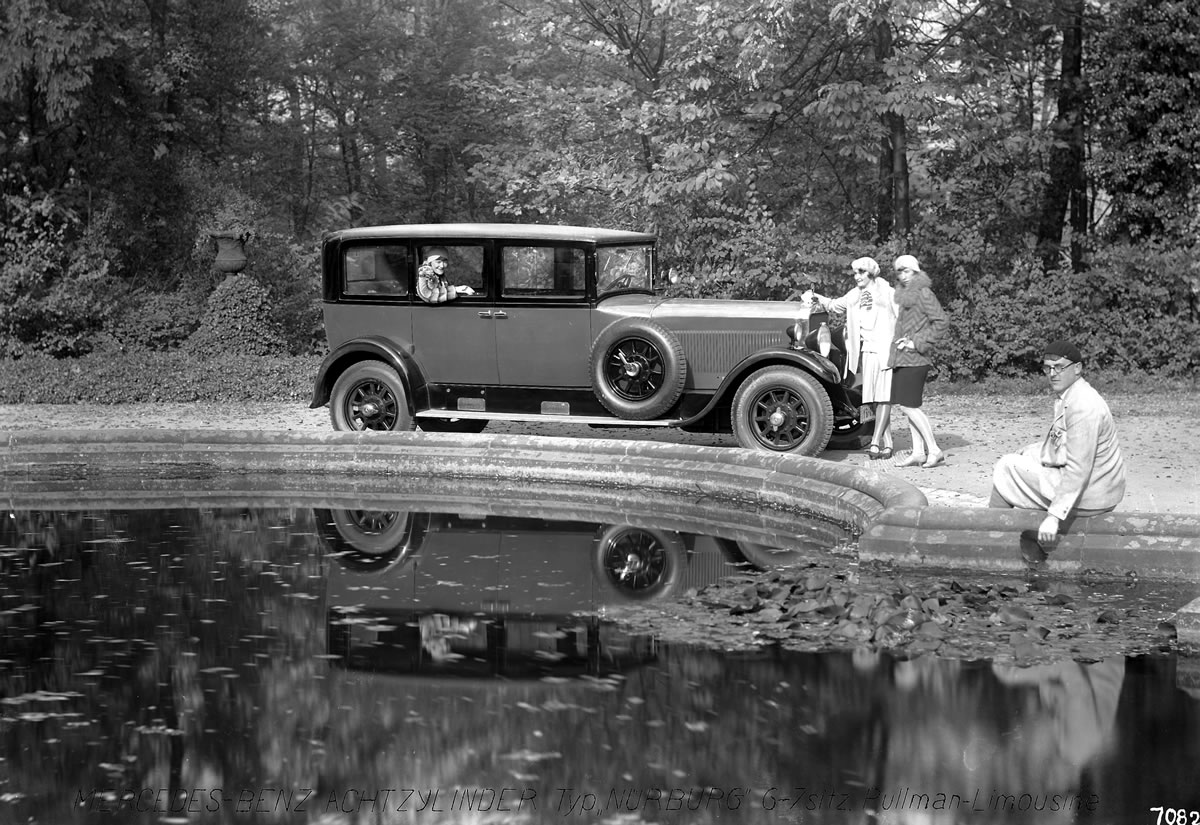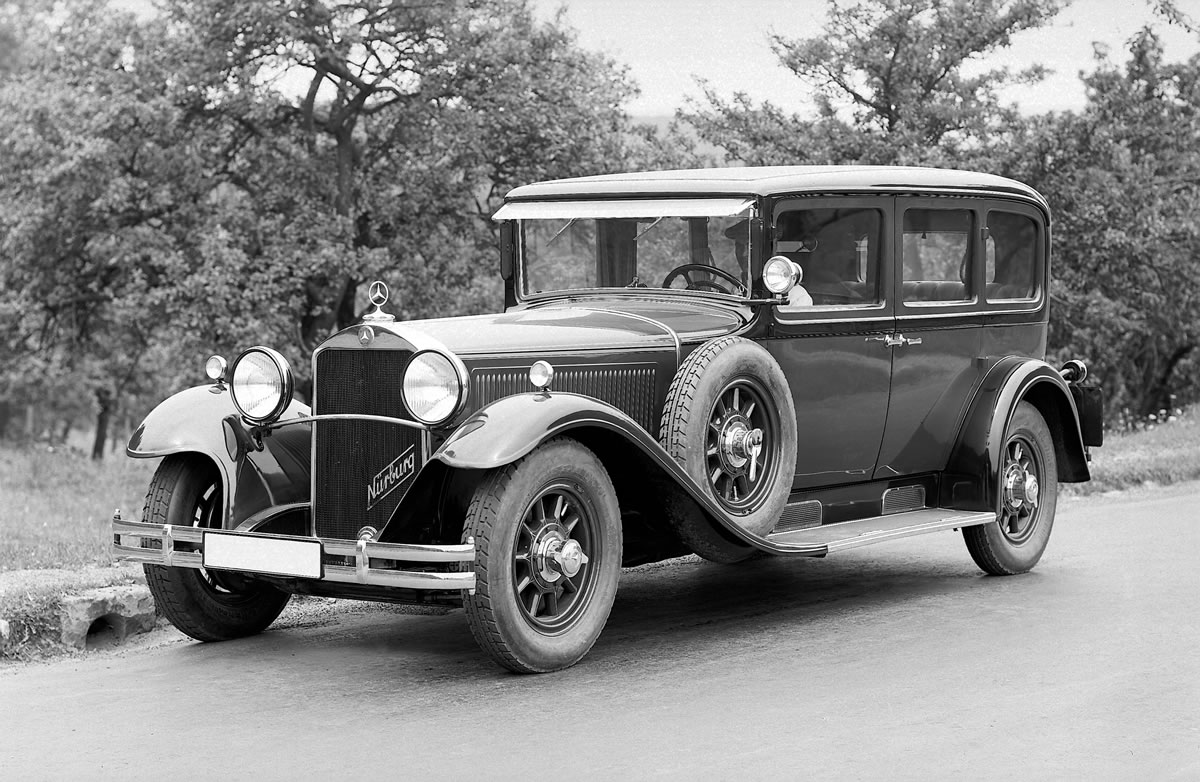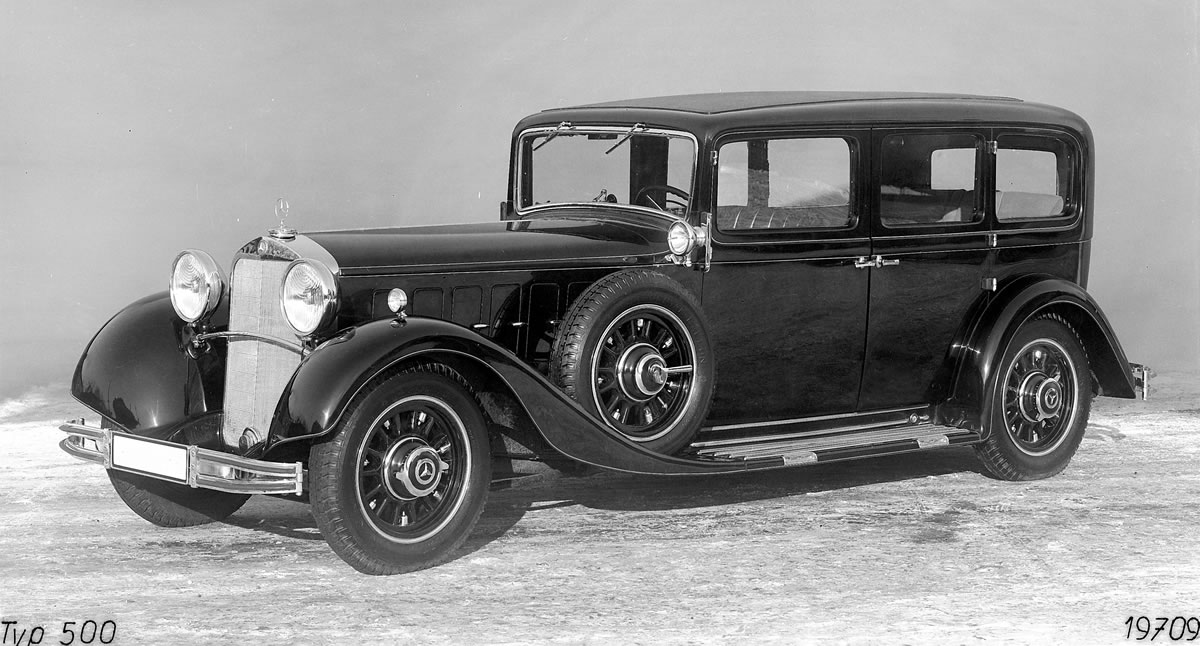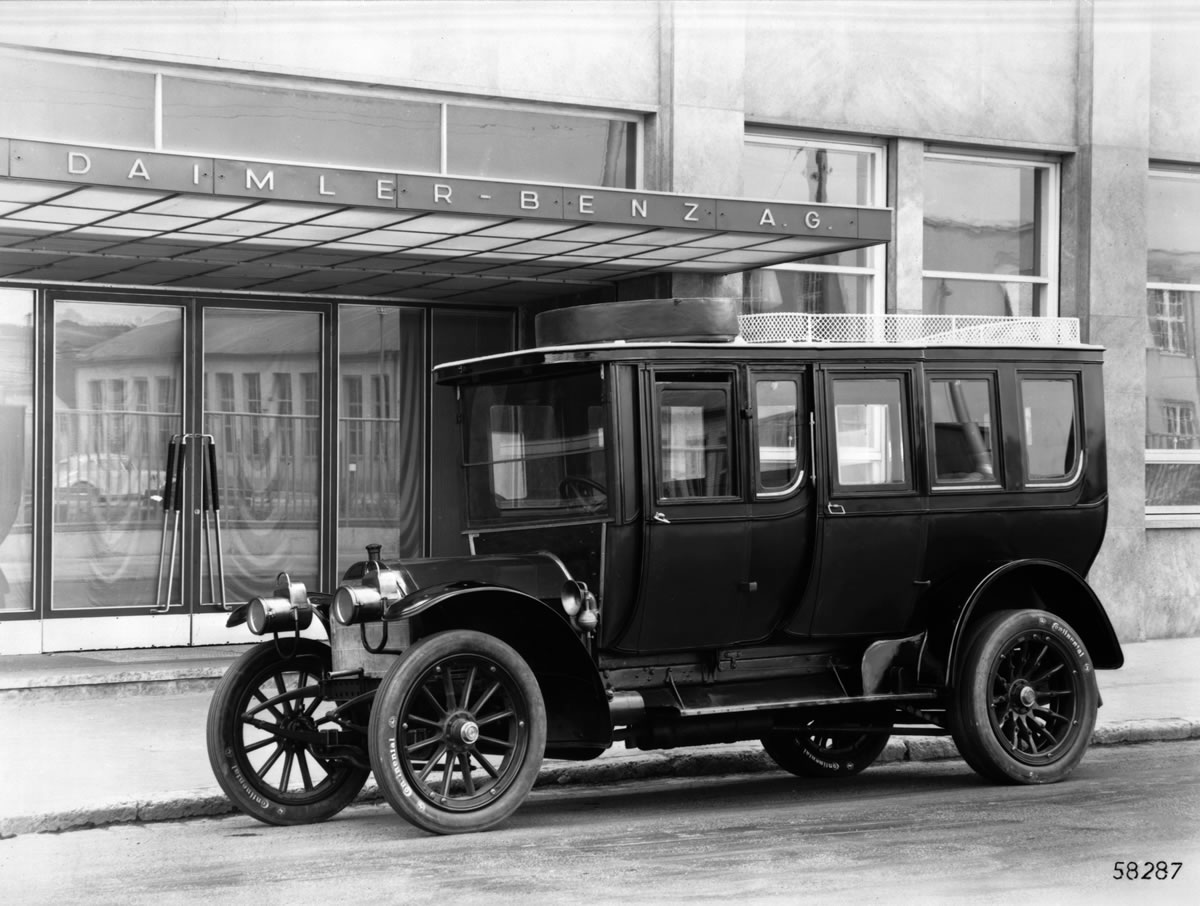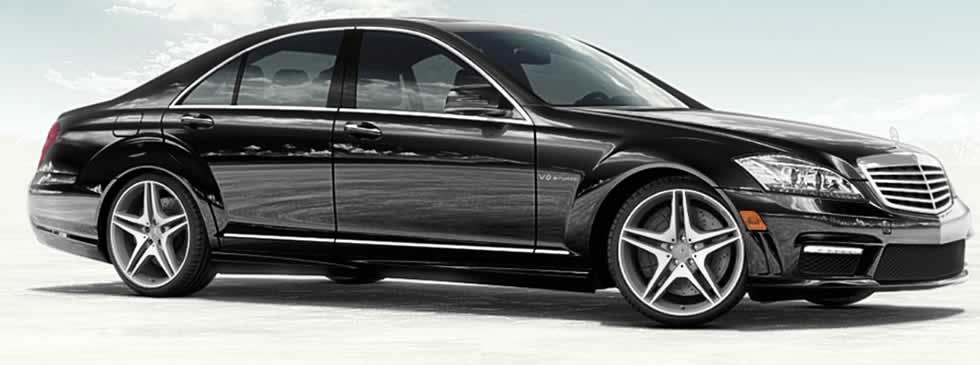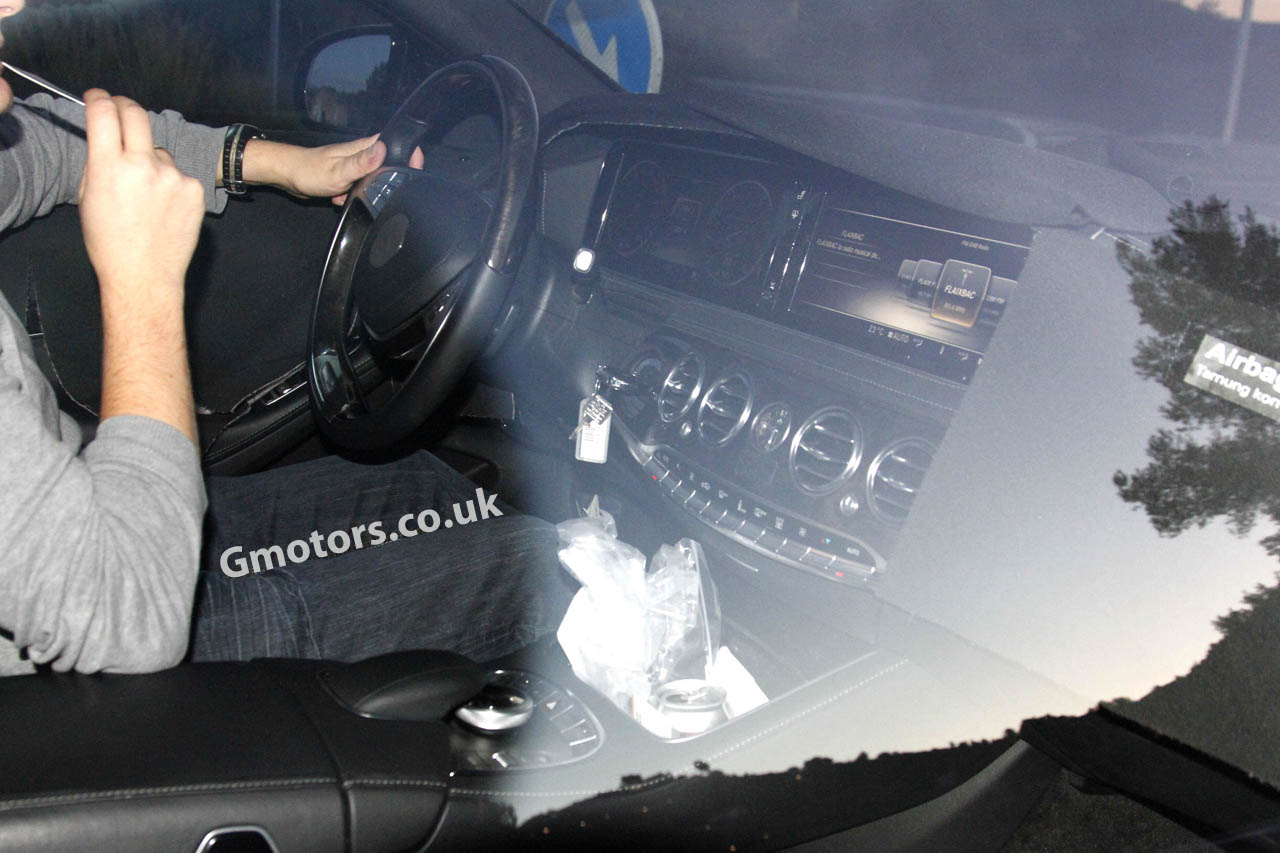The Mercedes-Benz S-Class has remained the best selling luxury saloon since 1951, selling more than 3.5 million vehicles. The S-Class has a long and rich tradition that goes all the way back to the early days of the Mercedes brand. The Mercedes-Benz brand and specifically the S-Class is synonymous with high-end vehicles, but Mercedes’ emphasis on luxury, comfort and safety had been firmly established long before the S-Class was given its official designation.
This tradition follows the philosophy of a car that is always a reflection of the times. After all, with each new generation of its top-of-the-range vehicles, Mercedes-Benz has always provided convincing responses to the wishes and needs of each specific era. In a phrase that sums up the importance of the model’s history right through to the present day, the S-Class and its predecessors are, and have always been, the epitome of the perfect car.
Captivating in the sum of its qualities
Thanks to the innovative technology, high level of comfort and ground-breaking safety systems in every generation, the flagship model from Mercedes-Benz is considered a pioneer of automotive engineering – and of the industry as a whole, as many technical features offered by Mercedes-Benz for the first time in a series production car with the S-Class were subsequently also adopted by other car manufacturers.
This pioneering role has been a constant throughout the company’s history and it is still an important aspect at Mercedes-Benz today. There is hardly any other vehicle with which Mercedes-Benz is identified more closely than the S-Class. Due to the sum of its characteristics, it is a benchmark for the entire Mercedes-Benz brand and is considered the best in its class throughout the industry.
The S-Class embodies the image of premium-class Mercedes-Benz vehicles: it is the automotive essence of a lifestyle characterised by the highest possible standards of mobility and individuality, and stands for the ultimate in success and good taste. Not for nothing has the S-Class been acclaimed again and again as the best car in the world.
The world’s best-selling luxury vehicle
Since 1951, when the production of luxury class saloons resumed for the first time since the end of the Second World War, Mercedes-Benz has sold more than 3.5 million high-end saloons. This makes the S-Class and its predecessors the most successful model series in this segment. The current model series 221 has continued the success story by selling more than 500,000 units since its market launch in autumn 2005.
A unique tradition stretching back to the early Mercedes days
The Mercedes-Benz S-Class looks back on a unique tradition. Since the early days of the Mercedes brand at the start of the 20th century, its model range has focused around premium-class vehicles. Mercedes-Benz dominated the high-end, luxury segment right from the start and helped to shape automotive developments in every era like no other marque.
From W 187 to ‘Ponton Mercedes’ (1951 to 1959)
The direct ancestral line of the S-Class begins in the post-war period with the type 220 (W 187) which marked the return of Mercedes-Benz to the luxury segment in 1951 – six years after the end of the Second World War and after the first phase of Germany’s reconstruction was complete. In 1954, this was followed by a completely new model with the same designation. This new type 220, also known internally as the 220 a (W 180), was the first Mercedes-Benz six-cylinder model with a unitized body design. Its ultra-modern, spacious ‘ponton’ body offered previously unheard of levels of comfort. With the launch of the overhauled and more powerful type 220 S in 1956, the ‘S’ designation became a permanent fixture in the names of high-end Mercedes-Benz models, underlining the special status of the ponton six-cylinder. 1958 saw the launch of the 220 SE (W 128), an even more powerful version of the flagship model thanks to fuel injection. As with the 300 d (W 189) luxury limousine introduced one year earlier, the vehicle’s performance and efficiency were enhanced by manifold injection.

Mercedes-Benz 220 (W 180, 1954 to 1956). The car in the photo dates from 1955
From ‘fintail’ to high-performance saloon (1959 to 1972)
The ‘fintail’ models introduced in 1959 (220, 220 S and 220 SE (W 111)) earned their nickname from the understated tail fins that adorned the rear wing. Owing to their function as a parking aid, they were also officially known as ‘sight lines’. The new high-end generation represented a very special milestone in automotive history, as this was the first time that the safety bodyshell with crumple zones devised by Béla Barényi had been used on a series production car. The flagship model presented in 1961, the 300 SE (W 112), was fitted as standard with air suspension and the newly developed automatic transmission from Mercedes-Benz, and its longer version in 1963 started off a tradition in luxury class saloons by Mercedes-Benz: the wheelbase, which was now 10 centimetres longer, offered rear passengers significantly more legroom and comfort. The 108 and 109 sedans, which replaced the 1965 ‘Fintail’, were characterised by a timelessly elegant design and large windows. In addition to the models fitted with conventional steel springs – referred to internally as the 108 series –, there was also an air-sprung variant of the model series 109, which was also available from the outset with a 10 cm longer wheelbase. Special highlights included the 300 SEL 6.3 presented in 1968. The new top-of-the-range model in the series was fitted with the high-performance V8 engine from the high-end Mercedes-Benz 600 sedan. In addition to exceptional comfort and luxurious interior fittings, it also rivalled the performance of a sports car.

Mercedes-Benz 220 SE (W 111, 1959 to 1965). The car in the photo dates from 1964
Model series 116 (1972 to 1980)
The name of the next-generation 116 launched in 1972 also reflected what had been on the agenda at Mercedes-Benz for decades: all luxury sedans with an ‘S’ in their model designation were now officially referred to as ‘S-Class’. The new designation went hand in hand with a whole bundle of innovations that set new standards in respect of safety and comfort. The comprehensive safety concept included a collision-proof fuel tank, a four-spoke safety steering wheel, dirt-deflecting side windows, larger headlamps, distinctive turn signal lamps and dirt-deflecting ribbed rear lamps. 1977 saw the dawn of the diesel age in the premium class with the 300 SD, although this was initially just in the North American markets. The luxury diesel was also the first series production car with a turbo-diesel engine. From 1978, the S-Class was the first series production vehicle to be fitted with ABS (anti-lock braking system), which ensured that the vehicle would respond fully to the driver’s steering action even in an emergency braking situation. A global sensation, this ground-breaking innovation is now standard across all vehicle categories. The S-Class underlined its status as an automotive engineering benchmark and its model designation became a generic term for high-end vehicles.

Mercedes-Benz S-Class 116 series (1972 to 1980). The 450 SEL 6.9 model in the photo dates from 1980
Model series 126 (1979 to 1991)
The transfer of technology from the S-Class to other Mercedes-Benz model series and to competitor vehicles before becoming the generally accepted technology standard continued in the years that followed, turning the S-Class into a genuine trendsetter. The airbag, now a key component of automotive safety, made its debut in 1981, in the model series 126 which had been launched two years earlier. Other features from this S-Class generation included the aerodynamically-enhanced shape and systematic weight reduction through the use of elements such as the new light-alloy V8 engines. The model series 126 also set the trend in terms of its design: it was the first Mercedes-Benz passenger car to do away with the traditional chrome bumpers in favour of deformable plastic ones built to withstand a ‘parking dent’. Initially felt by some observers to be plain and tasteless, the design of the model series 126 soon came to be regarded as timeless and elegant.

Mercedes-Benz S-Class 126 series (1979 to 1991). The 500 SEL model in the photo dates from 1982
Model series 140 (1991 to 1998)
The S-Class of the model series 140 represented the new superlative at Mercedes-Benz in 1991. Its developers were aiming for maximum comfort, not least due to the larger dimensions and double glazing for optimum acoustic insulation. The top models, 600 SE and 600 SEL, were the first series production cars at Mercedes-Benz to feature a V12 engine. The entry model was the 300 SD turbo-diesel, which now brought luxury class to the diesel segment in the markets outside of North America too. This generation of the S-Class also introduced a pioneering safety innovation to the world of automotive engineering: the ESP® Electronic Stability Program which was fitted as standard on the V12 versions and was available as an option on the V8 models from 1995 onwards. The following year also saw the addition of the BAS Brake Assist System.

Mercedes-Benz S-Class 140 series (1991 to 1998). The S 600 model with a long wheelbase in the photo dates from 1994
Model series 220 (1998 to 2005)
After the model change in 1998, the appearance of the new S-Class (model series 220) was all about understatement. Weight saving and a further increase in safety and comfort were among the primary development goals. Despite having to abandon weight-intensive features such as double glazing, the new model generation offered even greater comfort, not least due to the new electronically controlled AIRMATIC air suspension, COMAND control and display system, and innovative DISTRONIC proximity-controlled cruise control system. Active Body Control (ABC), which was available from 1999, reduced body roll for an as yet unsurpassed level of driving dynamics. The interior design which, for the first time, had been developed in close conjunction with the exterior, created an inimitable ambience in the S-Class. The first AMG model to officially make its way into the S-Class price list, the S 55 AMG appealed to customers with a passion for speed. Even the regular high-end model without the AMG sports badge, the S 600, had its performance boosted in autumn 2002, making it capable of reaching the magical 368 kW (500 hp) mark for the first time ever. At the same time, the model series 220 saw the introduction of another ground-breaking innovation: the PRE-SAFE preventive occupant safety system. This system enabled the vehicle to prepare occupants for an imminent collision by automatically initiating measures for their optimum protection. As part of the model refinement, the S-Class could now also be equipped with intelligent 4MATIC permanent all-wheel drive for the first time.

Mercedes-Benz S-Class 220 series (1998 to 2005). The S 400 CDI model in the photo dates from 2002
Model series 221 (2005 to 2013)
The model generation 221 presented in 2005 combined an expressive exterior with a high-grade, luxury interior. The advanced COMAND system included a controller on the central tunnel for quick and intuitive operation of the increasingly complex functions and menus. Other pioneering technical innovations included active Night View Assist, advanced DISTRONIC PLUS proximity control and Brake Assist Plus, which was upgraded to the PRE-SAFE brake with autonomous partial braking in 2006. Further assistance systems such as Blind Spot Assist, Lane Keeping Assist and Speed Limit Assist helped to further reduce the strain on the driver and brought the Mercedes-Benz S-Class one step closer to the vision of safe, accident-free driving. This generation of the S-Class also set new standards in terms of improved physiological safety, which was demonstrated by comparing the heart rates of various drivers. In this respect, too, the S-Class proved that its extremely sound basis established over more than 40 years could still be improved upon.
The upgraded generation of the 221 series was launched in 2009. The S 400 HYBRID was the first luxury Mercedes-Benz model with a hybrid drive and the first series production car with a lithium-ion battery. Other prime examples of efficiency were the S 350 BlueTEC model introduced in 2010 – a particularly clean diesel – and the S 350 and S 500 BlueEFFICIENCY featuring petrol engines that were extremely efficient, yet powerful thanks to direct fuel injection. Finally, at the start of 2011, Mercedes-Benz introduced a highly efficient four-cylinder engine to the S-Class in the shape of the S 250 CDI. Its diesel powerplant delivered the consumption figures one would expect of a compact car, previously unachieved by a vehicle in the luxury class – without any compromise in terms of performance and comfort.

Mercedes-Benz S-Class 221 series (2005 to 2013). The S 500 model in the photo dates from 2007
The roots of the S-Class
The unique tradition of the Mercedes-Benz S-Class did not begin with the type 220 (W 187) in 1951; its roots stretch right back to the very origins of the Mercedes brand at the start of the 20th century. An early, eye-catching example is the Mercedes-Simplex 60 PS launched in 1903. The then top-of-the-range model is now one of the most spectacular exhibits in the Mercedes-Benz Classic collection. The elegant and luxurious touring sedan from 1904 was once owned by Emil Jellinek, a key protagonist in the early history of the Mercedes brand.
In the years to follow, the Mercedes and Benz sales ranges always included several high-end, luxury models. Even though open-top tourers were by far the most commonly-used body form during this period, the more powerful models were also offered as luxury sedans affording the ultimate in passenger comfort.
In the mid-1920s it was a different picture. Due to ever more powerful engines and increasing volumes of traffic, which the road-building programme was unable to keep up with, safe handling characteristics, a comfortable interior and optimum protection against wind, rain and dust were becoming more and more important. Saloons and Pullman saloons gradually began to replace the open-top tourers. The important high-end, luxury models of this era were the six-cylinder compressor 15/70/100 PS and 24/100/140 PS, produced under the Mercedes marque at the end of 1924. In 1926, the merger of the two previously independent companies founded by Carl Benz and Gottlieb Daimler led to the creation of Daimler-Benz AG, which added the first Mercedes-Benz production car with an eight-cylinder engine, the Nürburg 460 (W 08), to its model range in 1928. It remained in the sales programme – with continuous further development – until 1939. The last model was the type 500. From 1926 onwards, the entry-level vehicle in the Mercedes-Benz high-end range was the six-cylinder 12/55 PS, which was continually refined and developed through to the launch of the Mercedes-Benz Mannheim 370 (W 10) in 1931. The completely new Mercedes-Benz 290 (W 18) followed in 1933, but went on to be replaced by the type 320 (W 142) in 1937.

Mercedes-Benz Nürburg (W 08, 1928 to 1933). The Nürburg 460 in the photo dates from 1929
High-end saloons
In addition to vehicles from the high-end, luxury segment, Mercedes-Benz has always offered cars that represent a major advancement. They not only meet the highest standards in terms of safety, comfort and style: due to their status as an absolutely top-of-the-range model, extremely luxurious ambience and particularly opulent and spacious interior, they are primarily tailored to meet the requirements of individuals who need to, or have to, reflect their status in the choice of their vehicle, too. In this category was the Mercedes-Benz ‘Super Mercedes’ launched in 1930, also known as the type 770. Powered by a large-displacement eight-cylinder engine with supercharging, this top-of-the-range Mercedes-Benz model was used as an automotive statement, primarily by crowned and uncrowned heads of state and high-ranking figures from the world of industry and finance.
The ‘Adenauer Mercedes’ (1951 to 1962)
After the Second World War, Mercedes-Benz once again dominated the luxury class automotive segment. The type 300 (W 186) made its debut in 1951 along with the type 220 at the first International Motor Show (IAA) in Frankfurt am Main. When it was launched, the new flagship model from Mercedes-Benz was the fastest German production car with a top speed of 160 km/h. The 300 was also the first official state vehicle produced in Germany after the war and therefore represents, like no other model, Germany’s return to the international stage. The German Chancellor Konrad Adenauer was given one of the first examples of this model in December 1951 and, from then on, he would be driven around in nothing other than a type 300. Consequently, the high-end model became popularly known as the ‘Adenauer Mercedes’. The type 300 was completely revised in 1957 and was given the internal designation 300 d (W 189). The ‘d’ stood for the fact that this was the fourth version (after the 300, 300 b, and 300 c). The car’s higher engine output was thanks to fuel injection which, for the first time, was no longer direct fuel injection, but manifold injection. The longer wheelbase and larger body resulted in greater comfort, as did the optional electronic power steering and air conditioning – both of which were anything but commonplace at the time. The air conditioning system, known back then as the ‘cooling system’, was available at an extra cost of DM 3,500 – about the same as it would have cost for an entire VW Beetle at the end of the 1950s.

Mercedes-Benz 300 (W 186 / W 189, 1951 to 1962). The car in the photo dates from 1952
The legendary type 600 (1963 to 1981)
One and a half years after the last 300 rolled off the production line in Sindelfingen in March 1963, a new top-of-the-range model from Mercedes-Benz made its debut at the International Motor Show in Frankfurt. The type 600 (W 100) was a superlative vehicle: its 6.3-litre V8 engine delivered an extremely respectable performance and a top speed in excess of 200 km/h. Optimum ride comfort was ensured by air suspension, an automatic transmission manufactured in-house and electronic power steering. Unique hydraulic comfort features enabled adjustment of the front seats and rear bench, opening and closing of the doors, boot lid and optional sliding roof, and opening and closing of the side windows. The five to six-seater version with a regular wheelbase of 3200 millimetres was predominantly ordered by highly discerning private customers. In addition, Mercedes-Benz also offered a seven to eight-seater version with a 70 cm longer wheelbase, which was primarily used as an official state or ceremonial limousine. In June 1981, the last of a total of 2,677 examples of the legendary luxury saloon was produced at the Mercedes-Benz plant in Sindelfingen. It was driven straight to Untertürkheim, where it was given pride of place in the company’s vehicle collection.

Mercedes-Benz 600 (W 100, 1963 to 1981). The car in the photo dates from 1963
Present and future
Over 20 years later, the company was once again dominating the high-end luxury saloon segment: with the Maybach 57 and Maybach 62 models, which were built in exclusive limited editions to the individual specifications of their discerning buyers at the Sindelfingen plant between 2002 and 2012.
From 2013 onwards, Mercedes-Benz will take its long-established tradition of building luxury, high-end vehicles into the future with the new S-Class (model series 222).

